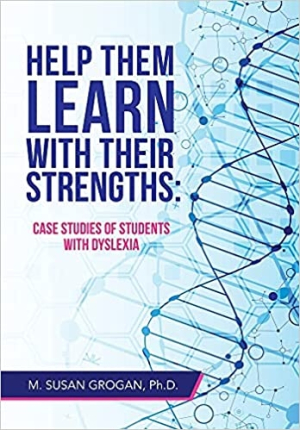Help Them Learn with Their Strengths
Case Studies of Students with Dyslexia
Help Them Learn with Their Strengths is an educational treatise that suggests means of supporting dyslexic students.
M. Susan Grogan’s education guide Help Them Learn with Their Strengths is about recognizing, encouraging, and employing the natural talents and abilities of dyslexic students.
Grogan reports that dyslexic students are often labeled lazy, or are told they are not trying hard enough. To counter these misunderstandings, she reframes dyslexia as a common learning disability. She introduces it as neurological and says that it impacts how a person’s brain processes the complex information needed to read, write, and spell. She describes the parts of the brain involved in various mental tasks and debunks myths about the brain, including about right- or left-brain dominance. In their place, an assertion that human brains are neurodiverse is made to alleviate the stigma around dyslexia.
Grogan’s work is accessible and multivaried. It draws on interviews with eighty-eight dyslexic students and extensive research to argue for infusing non-print-related formats into school curricula to help dyslexic students learn, build their self-esteem, and enhance others’ perceptions of their value. This seeks to confront the dismal statistics about reading proficiency in the United States: Grogan notes that less than half of fourth grade students are reading proficient, and only four percent receive special education services for dyslexia or reading difficulty.
Criticizing schools for failing to identify dyslexic students early enough for effective intervention, and for not having personnel trained to help, the book says that many dyslexic students end up giving up and dropping out of school following bullying, and discouragement. Instead, Grogan says, dyslexic students should be accommodated, and should have their alternate skills and talents highlighted. Here, reading, writing, and spelling problems do not correlate to intelligence: Grogan shares many examples of dyslexic students excelling in other areas.
The book’s specific suggestions for addressing the gap between students’ needs and the educational system’s provisions are various. They include student-paced homeschooling, intense phonemic and phonics instruction, and coaching. Supportive, encouraging teachers are called essential to encouraging the use of dyslexic students’ natural strengths and abilities. And a list of gifted individuals throughout history who appear to have been dyslexic is provided to show what’s possible; it includes Leonardo da Vinci, Pablo Picasso, and Albert Einstein.
But the book includes errors in punctuation and subject-verb agreement. There are misused words and garbled sentences, and one child’s name changes in the middle of an interview report. Such issues undermine the book’s authority.
Help Them Learn with Their Strengths is an educational treatise that suggests means of supporting dyslexic students.
Reviewed by
Kristine Morris
Disclosure: This article is not an endorsement, but a review. The publisher of this book provided free copies of the book and paid a small fee to have their book reviewed by a professional reviewer. Foreword Reviews and Clarion Reviews make no guarantee that the publisher will receive a positive review. Foreword Magazine, Inc. is disclosing this in accordance with the Federal Trade Commission’s 16 CFR, Part 255.

